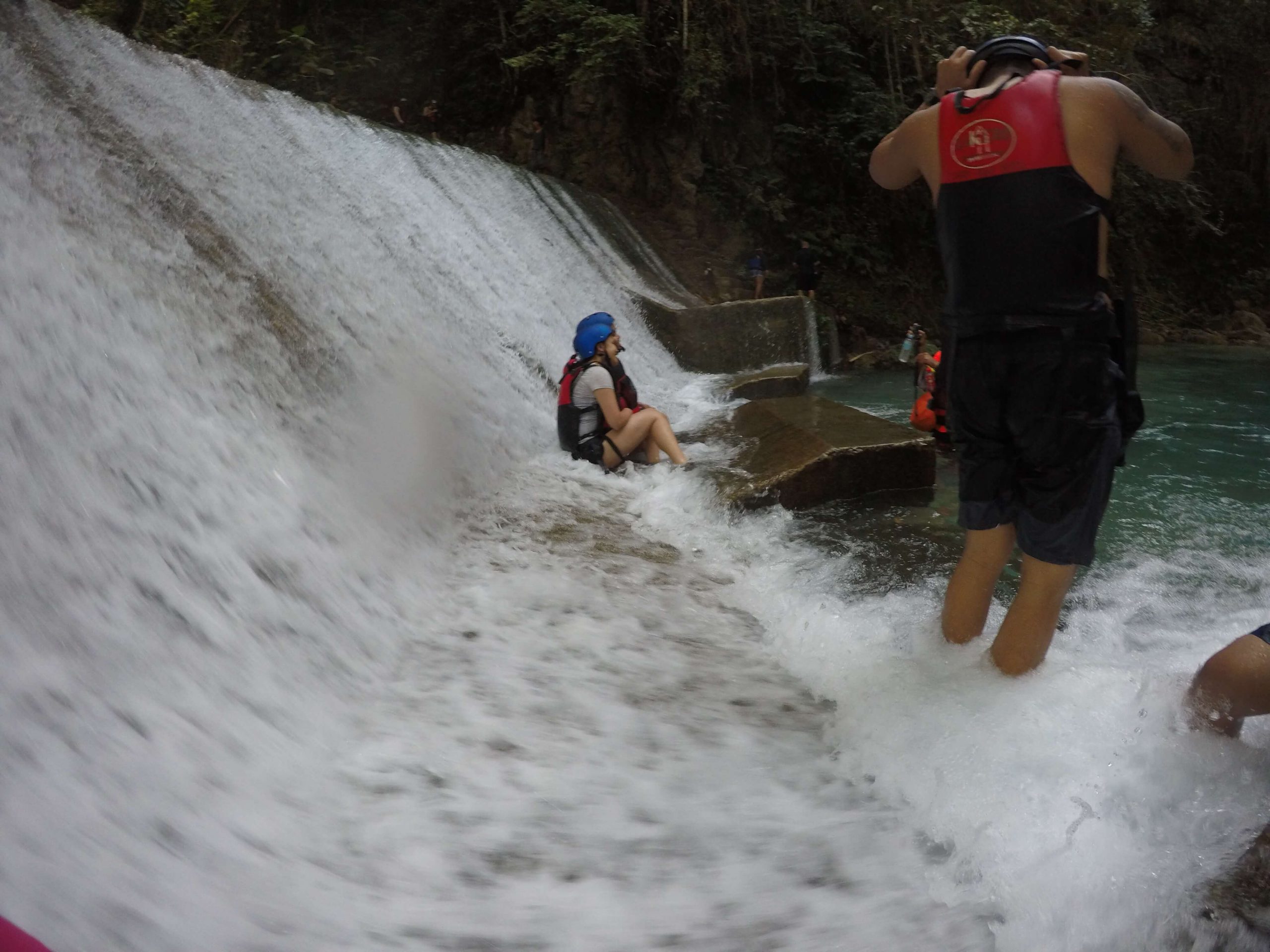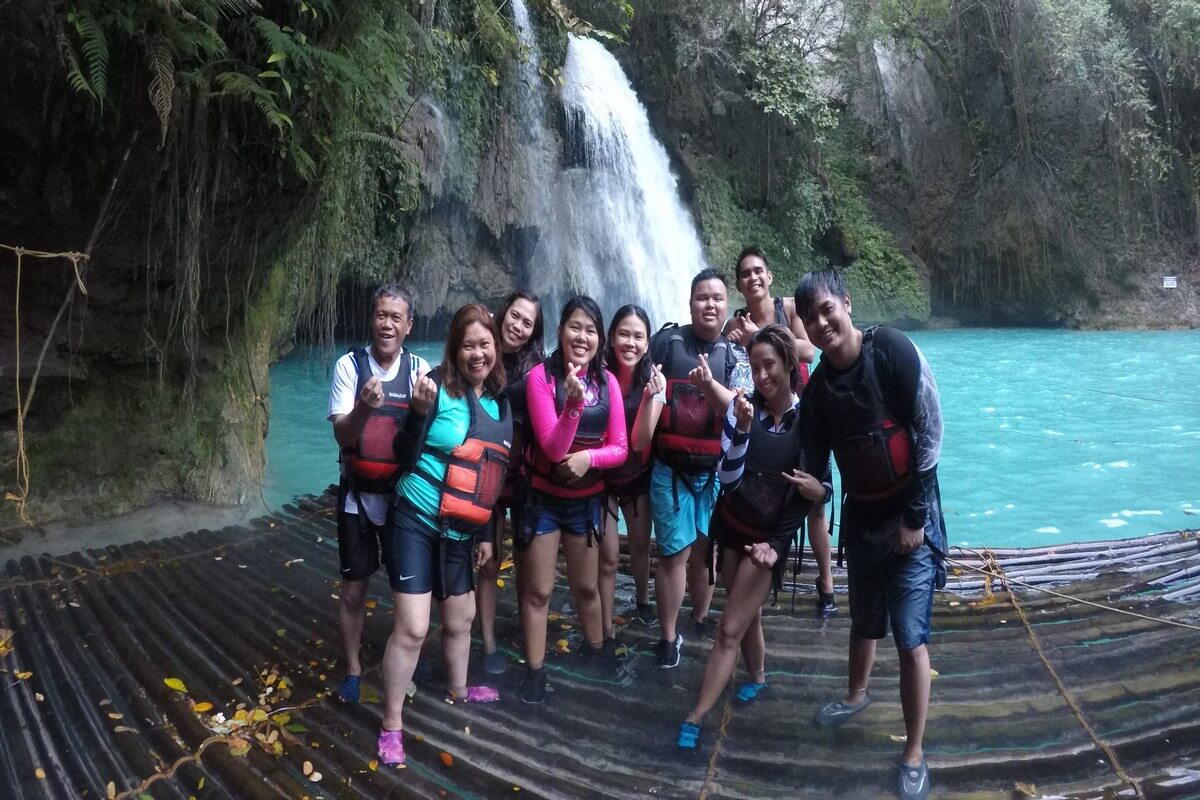The first time I heard from my friends that we would be doing canyoneering, I thought to myself, “What’s that?” I never really understood it until I experienced it firsthand on the day we went to the Badian Canyoneering Adventure. That’s how much I trust my friends — they’re not the adventurous type who would typically go beyond their comfort zones. Well, we all stepped out of our comfort zones when we decided to visit one of the most popular tourist spots in Cebu.
Canyon and Canyoneering Defined
What is a canyon, anyway? As defined by National Geographic, a canyon is a deep, narrow valley with steep sides. Canyons are formed through the movement of rivers, weathering, erosion, and tectonic activity.
Now, what is canyoneering (or canyoning)? It’s an adventure activity where canyons are explored from point A to point B using various techniques such as hiking, rappelling, swimming, and cliff diving.
What is Badian?
Badian is a municipality located in the southwest of Cebu, Philippines. It’s where the famous canyoneering adventure and Kawasan Falls are situated. Long ago, the area was abundant with a plant called badyang (also known as the taro plant). However, Spaniards found it difficult to pronounce, so the name was eventually changed from Badyang to Badian.
Meeting our Badian Canyoneering Tour Guide
After the first half of our Cebu package tour, we had an early lunch at the Badian Public Market before a multicab picked us up.
A 15-minute ride brought us to Lucero Tours, where we collected our life jackets and helmets. We signed waivers and met our cool and fun tour guides — two brothers who kept the energy high throughout the trip.
Once everything was settled, our habal-habal (motorbikes) roared to life as we headed toward the canyoneering entrance.
After another 15-minute ride, we arrived at the multi-purpose hall, where we joined other tourists for a safety orientation.
🎉 Looking for the best deals?
Don’t miss this exclusive offer from Klook!
✅ Book now for as low as ₱3,000+ per person
🔢 Just select the number of guests at the bottom to see your final price!
👉 Check out the latest deal here!
The Beginning of Canyoneering
There are two ways to experience canyoneering: upstream and downstream. We chose Badian Canyoneering downstream. Start imagining in 3… 2… 1!
Our adventure began under the scorching sun. We knew we were at the top of the world when the towering mountains were now at eye level, and our view was filled with lush green trees and a clear blue sky.
We started trekking at 12:30 PM, first walking on a concrete path that gradually turned into a rocky trail. By 1 PM, we reached Kanlaob River, where the sound of rushing water and the clatter of rocks blended into nature’s own melody.
Although we endured the smoldering heat and dripping sweat from the trek, the height of the first jump wasn’t quite enough to tempt us to plunge into the cold turquoise water — at least, not at first. Standing at 10 to 15 feet high, it felt intimidating since it was our first time. Nevertheless, there was no other way out but to jump. For those seeking a less daring option, there was also a 7-foot-high jump available.
As we continued, the following jumps felt more manageable, both in height and water depth, allowing us to get creative with our plunges. We tried jumping backward, in a sitting position, and even sliding into the water while lying on our backs. Check out our videos below!
@9jammovesare you ready to go to south cebu♬ original sound – margatuzon on IG
Take note that all of these Badian canyoneering activities were supervised by our tour guides. Do not attempt these activities on your own as the guides are the only ones who know which areas have deep water to prevent you from hitting the bottom and getting hurt.
For the most part, canyoneering is all about maintaining your balance while walking on slippery stones with streaming water rushing past you. A pair of non-slip aqua shoes will be your best friend here.
After 2 ½ hours, we finally reached the barbecue stalls. They sold isaw, barbecue, puso (rice wrapped in banana leaves), and hotdogs. For my fellow Manileños reading this, you’ll love their isaw — it doesn’t have that bitter aftertaste often found in Manila’s version. Pardon me, but… well, you’ll know what I mean!
Meanwhile, some adventurers were cliff jumping in this area, but our group chose to sit back, enjoy our barbecue, and watch them. After all, we knew there were more jumps waiting for us ahead.
The Big Jump
We finally reached the part we feared most in our canyoneering adventure — the third level of cliff jumping! I noticed that this particular jump wasn’t as popular among tourists, who often opted for the slide beside it instead.
However, I highly recommend giving this jump a try because it’s where you’ll truly conquer your fear of heights. Why? Because you can gear up and go for it! This is the only jump where you can run and leap without clearly seeing where you’ll land — a true test of courage.
Our tour guide mentioned that this jump is approximately 10 meters (32 feet) high. Check out our video below to see what I mean!
The only challenge after successfully jumping off the cliff was the strong water current pulling us to the left, while the slide — which we didn’t want to miss — was on the right. Thankfully, a kind man helped us out of that situation, allowing us to try the slide as well.
It was crazy but incredibly fun! Our adrenaline rush from the cliff jump kept us pumped for more excitement. Check out the video below!
Next, we faced the second-level cliff jump, standing at 12 meters (39 feet) high. Unlike the third level, there was no room for a run-and-jump — which made it even scarier. We simply stood beside the tree, bent our knees, and took the leap.
The air whistled solemnly in my ears. In seconds, all I could hear was the splash of water and the bubbling sounds beneath the surface.
I did it!
@9jammovesEnjoy every moment of life by simply living in the present moment♬ original sound – Abelsメ0
The first-level cliff jump is located almost beside the second level. Our tour guide asked us which one we wanted to try, and obviously, we chose the second level. The first level stands at 15 meters (49 feet) high. I mean, there’s only a 3-meter difference, but I didn’t think I could push my limits any further.
While reading some blogs, I came across information claiming that the first level is actually Kawasan Falls itself. This confused me since it didn’t match what our tour guide had said. As far as I know, jumping from Kawasan Falls is now restricted due to its 60-foot height and the much stronger current — both of which could pose serious risks.
After the jump, we reached the man-made falls and enjoyed the stunning view as our backdrop. A little more walking later, and we finally arrived at Kawasan Falls!

Kawasan Falls Badian Canyoneering
Some tourists choose this as their starting point for canyoneering, but I believe reaching Kawasan Falls at the end feels like a well-deserved trophy after all the adventures. You can rent a raft here for P300 to get closer to the falls.
If you’re looking for another waterfall worth visiting in the southern part of Cebu, consider exploring Inambakan Falls as well.

Reminders
- Always wear your life vest and helmet.
- Wear non-slip aqua shoes.
- You may bring a dry bag, but be sure to place your gadgets and money in a ziplock bag. Dry bags don’t fully guarantee your items will stay dry.
- Avoid bringing an SLR camera — it’s too bulky.
- When cliff jumping, avoid looking down to prevent second thoughts.
